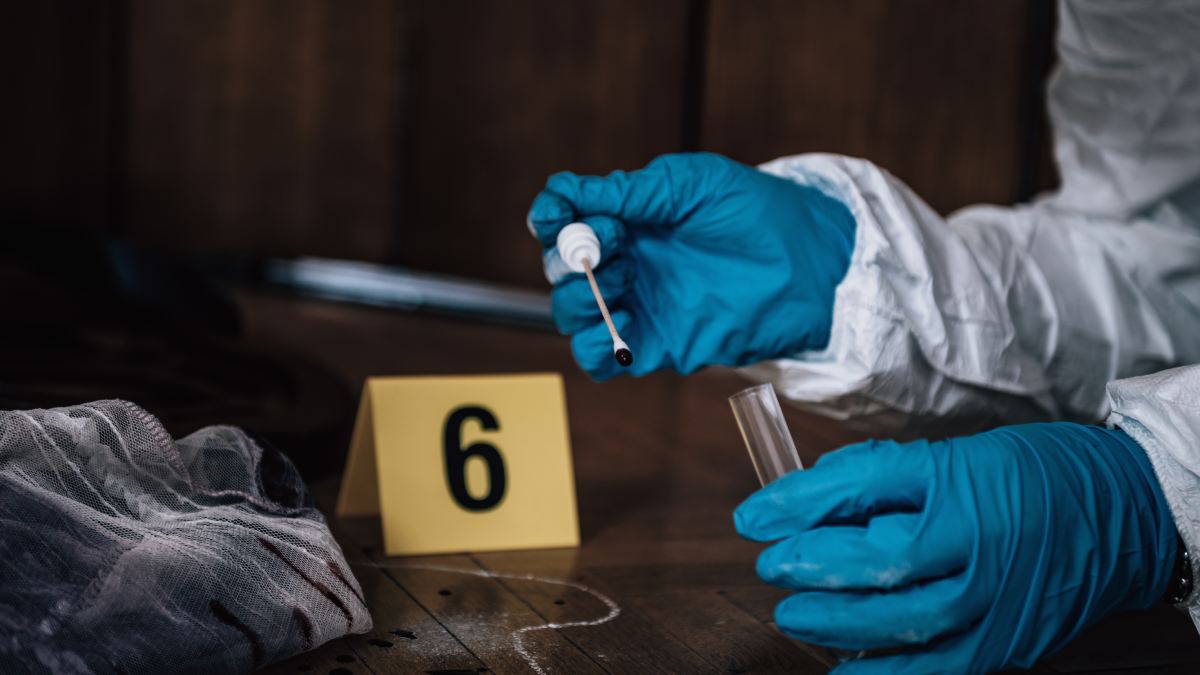
(850)-391-9472

Nothing is more satisfying than completing an escape room and feeling like you've accomplished something. The puzzles shouldn't be so easy that your four-year-old cousin can solve them in seconds, but they shouldn't be so difficult that it takes them hours to figure out. If you want to learn all about the science behind designing the best escape room, you are in the right place; the American Escape Room team has collected all the information you should know.
Escape rooms are designed so you and your team can immerse yourselves and have the most fun experience. There are a few factors to remember before choosing the perfect game for you. The difficulty level of the puzzles is one of them, as well as the escape room theme. If the difficulty level is more complex, the game can become more stressful for your team, while a more accessible room can quickly become tedious. The difficulty of the puzzles also changes throughout the game; they are designed similarly to a theatre act or novel to keep things exciting and interesting.
The game usually starts slow, then the tasks become more challenging, and the clock keeps ticking. As you solve the first few puzzles, they become increasingly more complex, and with the time limit, you have to start thinking faster and faster. Therefore, efficient teamwork becomes more important to win the game.
A captivating theme and storyline are critical to creating a suitable escape game. All escape room games have a set scene that is usually explained in a text or a video. Although this is not a crucial part of understanding the puzzles of the escape game, they hide several clues, so it is important to read/watch through them. This also helps you know the game's goal and enables you to set your personal goals.
Identifying the appropriate target audience, choosing a suitable room layout and size, and setting the game duration and difficulty level to provide a challenging but satisfying experience for players are also among the top priorities. By understanding these essential elements, an escape room designer can create a solid foundation for a successful and enjoyable escape room experience.

You must remember several things to create an engaging and exciting escape room game.

Several puzzle designs include physical, logical, observation, and wordplay. The difficulty of the puzzles influences the enjoyment of an escape game. In this part, we will detail the different puzzle types.
Knowing basic mathematics can undoubtedly help in winning an escape game. This is why teamwork is essential, since mathematical problems are the easiest for some people, while others can shine in different topics.
Physical puzzles can be found everywhere in escape rooms and have a wide variety.
The background music and the twitching lights are more important than putting you in the right mood. But, remember, everything can be a clue in an escape game!
Objects are all around you in an escape room, but they are rarely noticeable. Look for everything from the smallest one to the biggest, and make a list of everything that you have found.
Besides the atmospheric effect, the room's design can also be part of the clue.

In an escape room, logic is your best weapon. Many of the puzzles rely on logical thinking. This is a skill that escapes games help to improve the more you play, and after a few times, you can solve challenging logical puzzles as well.
Escape rooms usually rely on all the puzzle types and more! You might have to solve various puzzles to keep things entertaining and exciting until you win. You may have to combine several puzzle types from the list above to solve one clue, so always remember these.
The puzzle flow and balance of difficulty are always important. Different team members can solve different puzzles simultaneously and reunite with the solutions to get the following clues. Creating puzzles that are challenging but not frustrating for the players is vital for a suitable escape game.
The first step for a fantastic escape room game is creating an immersive experience by establishing a strong narrative or storyline. A good storyline can transport players to any era and place, allowing them to engage entirely with the puzzles and challenges in the room. The storyline needs to be consistent throughout the room. All the elements, like the decoration and the unknown, should contribute to the theme.
The props and decoration are the most critical aspect of creating an amazing experience. A realistic, detailed environment makes it easy for your team to live in the moment and suspend their disbelief entirely. The furniture, the objects, the colors, and the lights should also mirror a specific theme and mood.
Lighting and light effects are also significant in addition to props and decorations. Background music or sound effects can add to the game's mood and create an amazing experience. In horror escape rooms, the music is usually eerie to add tension and suspense for the players.
Technology is becoming an increasingly important part of our everyday life, and it is no different in the best escape rooms. You can find many gadgets that help you get into the spirit in the game, depending on the theme.

Surveillance cameras are installed in almost every escape room. They are not only placed there to track the movement of the players but also for the players to ask for hints or help. The cameras also reduce the possibility of accidents and problems.
In escape rooms, lights are not only helping with visibility, but they also hide or reveal essential clues. They can add a lot to the gaming experience for your team. Lights directly affect the mind of the players depending on where they are placed and what color they have.
Sound effects work well together with lights in an escape game. Some rooms have several hidden speakers, and they can hide essential clues. Sounds and music also make the game even more immersive. The appropriate sound effects can make any escape game a hundred times better! It is important to note that the rooms with loud sound and light effects might trigger epileptic or autistic people, so always be cautious.
Quizzes and puzzles are significant components of escape rooms. The game can be immersive and fun depending on the difficulty level and variety of puzzles. They also help teams work together better and improve essential problem-solving and logical thinking skills. The puzzles include mathematical problems, riddles, crosswords, and many more. The solutions give the player a sense of satisfaction and an overall good feeling. In newer espace rooms, you can find electronic labyrinths, touch screen code locks, and different devices.
In modern escape rooms, the door automatically pops open as soon as you get to the end of the game and find the solution. This makes players feel like masterminds! In addition, these doors bring escape rooms to the next level, creating excitement as they unexpectedly open when the clue is found.
It is essential to be locked in an escape room because the game's primary goal is to unlock doors and escape! There are two ways to open a lock: with a key or passcode. In either case, you have to open it manually or automatically. Since the beginning of escape rooms, conventional padlocks have been used, and these locks continue to be ideal for those set in households. However, other escape rooms' different themes do not use padlocks; instead, escape room designers use tech-based locks, including combination, digit, and sensor-activated locks. These add the extra thrill to the game and make it more immersive.
Props are the most crucial part of escape room games. Although many props are inanimate objects, newer games have many TVs, sound systems, robots, or even holograms. Of course, it also depends on the theme of the escape room if using a lot of technology is appropriate, but more often than not, they can be found. All these details can make a huge difference, and in the future, even more, technology will be included as we advance. But, of course, the technology is commonly integrated seamlessly into the game, so you might not even notice it at first.
Players should have an immersive and fun experience while playing an escape room game. An intriguing storyline, character, and theme are crucial, with good props and exciting puzzles—the importance of player experience. In addition, the game should have a satisfying conclusion and the right amount of technology to make it even more fun.